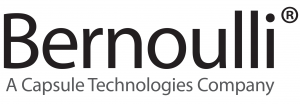
Creating the Foundation for Real-Time Healthcare
by Janet Dillione
The successful implementation of patient monitoring initiatives that improve patient safety has long been a goal of healthcare leaders across the country. Unfortunately, parsing notifications from individual medical devices, reliance on physical spot checks of patients, and the lack of rules-based analytics to assess a patient’s current condition in real-time or identify signs of deterioration puts that achievement out of reach for many hospitals and health systems.
One type of technology that has demonstrated promising results in this regard is continuous clinical surveillance. Medical device data can be aggregated and analyzed in a continuous stream along with retrospective data from the EHR to provide a more integrated assessment of the patient’s condition. In contrast to electronic monitoring, which includes observation, measurement and recording of physiological parameters, continuous clinical surveillance is a systematic, goal-directed process that detects physiological changes in patients early, interprets the clinical implications of those changes, and alerts clinicians so they can intervene rapidly.
Early warning system
A continuous clinical surveillance system uses multi-variate rules to analyze a variety of data, including real-time physiological data from monitoring devices, ADT data and retrospective EHR data. When its surveillance analytics identify trends in a patient’s condition that indicate deterioration, the system sends a “tap on the shoulder” to the clinicians caring for the patient.
For example, opioid-induced respiratory depression accounts for more than half of medication-related deaths in care settings. Periodic physical spot checks by clinical staff can leave patients unmonitored up to 96% of the time. By connecting bedside capnographs and pulse oximeters to an analytic platform to detect respiratory depression and instantly alert the right clinicians, continuous surveillance can shorten the interval between a clinically significant change and treatment of the patient’s condition.
Another condition that requires early intervention is severe sepsis, which accounts for more than 250,000 deaths a year in the U.S. The use of continuous clinical surveillance can help predict whether a patient’s condition is going to get worse over time. By aggregating data from monitoring devices and other sources and applying protocol-driven measures for septicemia detection, a multi-variate rules-based analytics engine can identify a potentially deteriorating condition and notify the clinical team.
Tackling alarm fatigue
An underlying factor that produces alarm fatigue is that the simplistic threshold limits of physiologic devices, like patient monitors, pulse oximeters and capnographs, are highly susceptible to false alarms. Repeated false alarms from multiple monitoring devices often cause clinicians to disregard these alerts or arbitrarily widen the alarm parameters.
Optimization of the alarm limits on bedside devices and silencing of non-actionable alarms is a good first step but not enough to eliminate the risk of alarm fatigue, especially for clinicians away from the patient’s bedside receiving alarms and alerts on a mobile device. Continuous surveillance can significantly reduce the number of alarms that clinicians receive.
Continuous clinical surveillance solutions that analyze real-time patient data can generate smart alarms. Identifying clinically relevant trends, sustained conditions, reoccurrences and combinatorial indications may indicate a degraded patient condition prior to the violation of any individual parameter. In addition, clinicians can leverage settings and adjustments data from bedside devices to evaluate adherence to or deviation from evidence-based care plans and best-practice protocols.
Real-time results
Leading clinicians and healthcare informaticists recognize that continuous clinical surveillance can help them deliver better, more consistent, more efficient and safer patient care.
Adoption of continuous surveillance has already started in many hospitals and eventually healthcare providers will utilize this technology with patients in all care settings. The ability of analytics to interpret objective physiological data in real-time and enable clinical intervention for deteriorating patient conditions that could otherwise be missed is just too powerful to ignore.
About the Author:

Janet Dillione is CEO of Bernoulli Health,
a leader in solutions for patient safety and real-time, connected healthcare.

